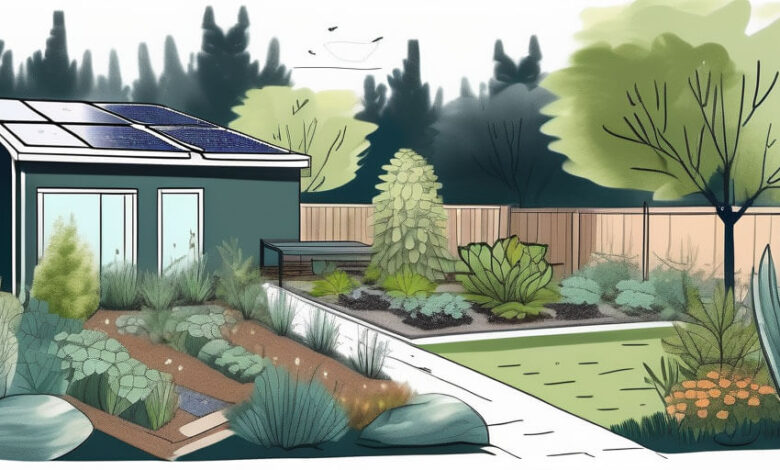Essential Tips for Designing a Sustainable and Stunning Landscape

Key Takeaways
- Discover practical ways to craft sustainable landscapes that are both beautiful and eco-friendly.
- Learn about the benefits of choosing native plants and efficient irrigation systems.
- Understand how sustainable landscaping can increase property value and contribute to environmental conservation.
Table of Contents
- The Rising Importance of Sustainable Landscaping
- Assessing Your Landscape Needs
- Soil Health and Its Impact
- Water Management Essentials
- Embracing Native Plants
- Benefits of Using Native Plants
- Designing With Purpose: The Aesthetic Appeal
- Implementing Efficient Irrigation Systems
- Sustainable Landscaping Practices
- Composting and Mulching
- Maximizing Property Value Through Green Practices
- Conclusion
Step one in addressing post-home improvement tasks revolves around cost-effectively maintaining the newly splendid appearance of interiors. Designing an environmentally friendly landscape is not haphazard; it shows responsibility toward the environment and future generations. Landscaping is regarded as an important activity that harmonizes beauty with the environment. There is an increasing shift towards eco-friendly lifestyle options, and most people today wish to incorporate sustainability principles in their gardens. This change is observable in many places worldwide, from small-town gardens to huge estates in big cities. For example, Charlotte landscaping has embraced this trend by integrating eco-conscious principles focusing on resource conservation and enhancing natural beauty. Adding green elements to the landscape goes beyond the aim of reducing the carbon footprint. It cuts maintenance and operational expenses while enhancing the property’s curb appeal and value in the market. Achieving these pointers will put you miles ahead in landscape engineering, and you will be able to enjoy the view of a sustainably friendly craft and, at the same time, an aesthetically pleasant landscape.
The Rising Importance of Sustainable Landscaping
With the rising concern towards the environment, landscaping is now more common with people and communities as sustainable landscaping practices. It advocates the design of gardens and other outdoor spaces that save resources and are in harmony with the ecosystem. The shift from industrial to landscaping practices underscores that there is hope for tackling chronic environmental problems by designing and sustaining ecosystems in and around our habitats. As highlighted by recent studies, effective landscaping is important for carbon trapping and conserving biological diversity, which adds to its importance apart from beautification.
Assessing Your Landscape Needs
Assessing the specific characteristics of your ecosystem is necessary for defining your landscaping business. These traits are important for the development of effective sustainability approaches. These components, along with climate, the type of soil, and the water accessibility, need evaluation to achieve effective landscaping. Such comprehensive knowledge will inform the choices of specific designs and plant features that will be economically viable and sustainable.
Soil Health and Its Impact
Healthy soil is the heart of any thriving landscape. Furthermore, healthy soil is essential to plant vitality as it enhances the water supply through the retention of critical minerals. Well-nourished and aerated soil can better nurture plant life naturally without chemical fertilizers and pesticides, meaning that soil is orthometrically precious. Performing a soil analysis effectively determines what further strategies should be undertaken to enhance the soil’s health composition.
Water Management Essentials
Water management is the backbone of sustainability in landscaping. Balancing the irrigation of plants using water as a resource is important for the environment in several regions. Methods such as harvesting rainwater, porous paving, improved waterway systems, and smart irrigation systems greatly improve water use effectiveness. Such measures enhance the effectiveness of landscaping projects, which saves the environment further resources and becomes cost-effective.
Embracing Native Plants
The use of indigenous plants is an effortless approach to attaining a landscape that meets sustainability criteria. Over centuries, these species have adapted to the area’s weather and soil, requiring minimal additional resources. Growing indigenous plants allows for minimal interference, which aids in reduced maintenance and enhancement of biodiversity.
Benefits of Using Native Plants
Indigenous plants have several distinct benefits. They aid in servicing many important animals, such as bees and butterflies, that need pollination, thus promoting a healthy ecosystem. In addition, they beautify the land, many of which can be used to explain and provide a centerpiece. Additionally, using indigenous plants and soil and water resources will contribute to creating a sustainable garden, as these plants will conserve such resources.
Designing With Purpose: The Aesthetic Appeal
Proper landscaping, which integrates aesthetics with nature, is a primary feature that aims to achieve the desired calm feeling. Additionally, the design focus should strive to attain full coherence with nature and provide a window to immerse in true nature and enjoy calmness, balance, and great structural beauty. Keener’s attention to flower beds at the gardens’ entrances should change every visitor’s experience from first sight. Every shrub in a flowerpot should be artistically blended with its pot to form a beautiful showpiece. Sculptures and fountains can uplift other people’s moods while retaining their success standards.
Implementing Efficient Irrigation Systems
Irrigation in the past resulted in a lot of water wastage. However, modern systems, like drip irrigation, minimize this by delivering water directly to plant roots. Achieving efficient irrigation revolves around the smart application of water technology, where automated sensor timers and smart irrigation tools proactively minimize waste and enable considerate consumption. These systems guarantee that water hydration is focused where it’s most needed while ensuring minimal waste.
Sustainable Landscaping Practices
Composting and Mulching
Composting organic materials and mulching are good strategies that serve a dual purpose. Organic compost enriches the soil by adding nutrients, which utilize chemical fertilizers. It also helps with healthy plant growth, strengthening a garden’s vibrancy. Meanwhile, mulching is a technique that conserves moisture, suppresses weed growth, and enhances soil structure, making it an integral component of sustainable landscaping practices. Doing so personally ensures an environment capable of sustaining itself, thereby needing less attention.
Maximizing Property Value Through Green Practices
Alongside landscape aesthetics, property value tends to increase with investment in sustainable landscaping. Homes with outfitted eco gardens easily appeal to several buyers, which is a notable advantage. In addition to beautifying the region, the sustainable approach shapes responsible environmental stewardship, which modern purchasers appreciate.
Conclusion
Sustainable landscaping is more than a mere fad; it reflects one’s deep commitment to protecting the environment and caring for future generations. Anyone can achieve a sustainable landscape by practicing efficiency, using indigenous flora, and carefully designing. This not only improves the current visual appeal of the home but also prepares it for future sustainability and increased real estate valuation. These strategies ensure flawless outdoor spaces and have an outstanding impact at the same time.




